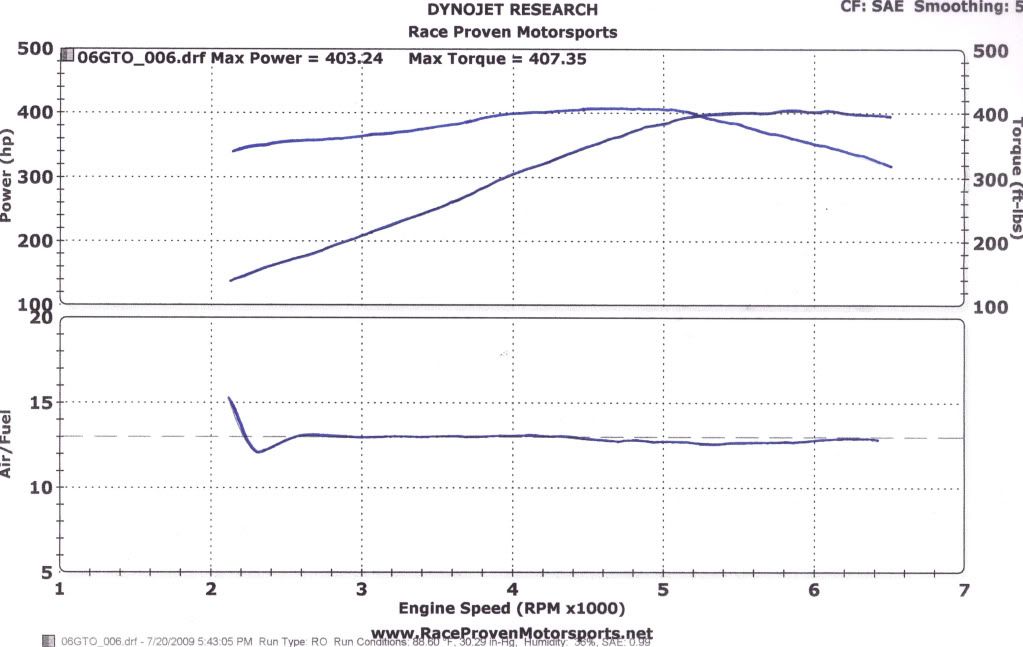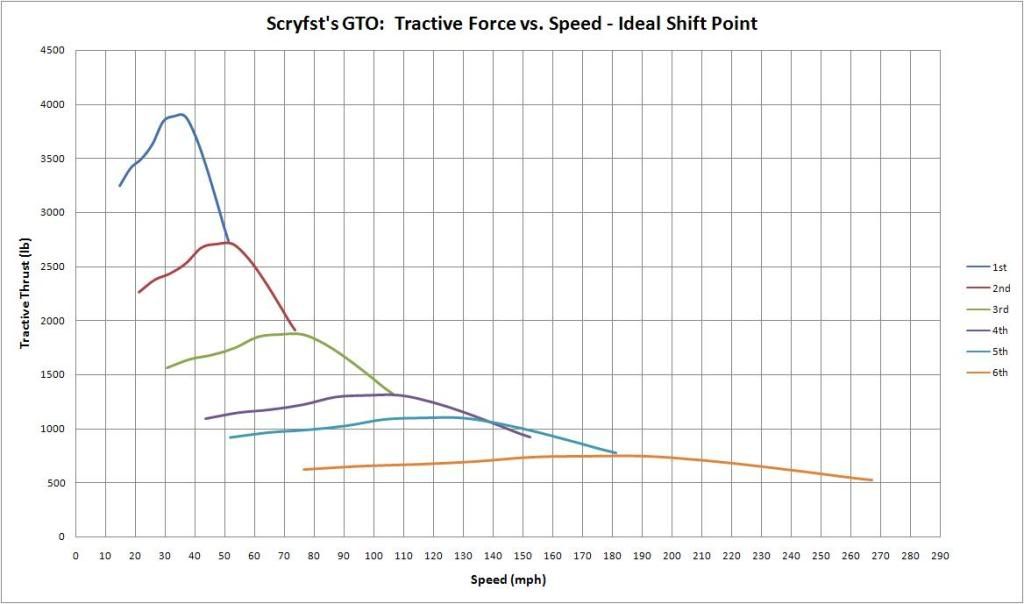ringo wrote:With that constant power gear ratio
The gear ratio makes no difference as I've exlained before... I'm really disappointed in myself that I can't get you to understand that, I thought my description using power was pretty good..... But I want to give it one more go using Torque this time, because you seem to grasp that.
1, You do understand that if you know the power curve of an engine you can calculate the torque curve don't you? Power =Torque x Rotational Speed. Therefore if we have an engine that can make 600bhp from 0 to 12,000rpm the power and torque curves will look like this:-

2, Lets take an example whereby the engine is mated to a 2:1 gear ratio and a 5:1 final drive, and the driven wheels are sized such that at 6000rpm in that gear the car is doing 100mph. (These are selected arbitrarily for illustration purposes only!)
3, The Torque at the engine at 6000rpm is 525lbft (from the graph -middle set of red arrows).
4, As you've said before (so I know you get this bit) the engine torque is multiplied by the gear ratio and the final drive, so the torque at the driven wheels is 5250lbft (525 x 2 x 5).
5, Now lets change the gear Ratio:- lets change it from 2:1 to 4:1. As we have doubled the gear ratio this halves the road speed, so we're now at 50mph, but we have
10500lbft (525 x 4 x 5). You rightly say that since the torque has increased the acceleration also increases!
6, But Wait, with our original gear ratio the constant power engine has more torque at lower engine speeds.... the equivalent engine rpm for 50mph and the gear ratio of 2:1 and final drive of 5:1 with the same sized wheels is 3000rpm (i.e. half the original engine speed we looked at since 50mph/100mph = 0.5).
7, If we now look back at the engine curves at 3000rpm how much torque does the engine produce? 1050lbft (see the left-most red arrow on the chart above). To get the torque at the wheels we need to multiply by the gear ratio and final drive again, so thats 1050 x 2 x 5 =
10500lbft! EXACTLY THE SAME AS WE HAD IN STEP 5 WHEN WE DOUBLED THE GEAR RATIO!
And that's why a constant power engine doesn't benefit from multiple gear ratios.
Please let me know which step you lost track and I'll try and explain it again from there......











